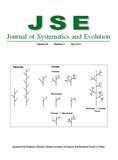Li-Yan ZENG, Ling-Li XU, Shao-Qing TANG, Tashi TERSING, Yu-Peng GENG, Yang ZHONG
The fine-scale spatial genetic structure (SGS) of alpine plants has received increasing attention, from which the seed and pollen dispersal can be inferred. However, estimation of SGS may depend strongly on the sampling strategy, including the sample size and spatial sampling scheme. Here, we examined the effects of sample size and three spatial schemes (i.e., simple-random, line-transect, and random-cluster sampling) on the estimation of SGS in Androsace tapete, an alpine cushion plant endemic to Qinghai-Tibetan Plateau. Using both real data and simulated data of dominant molecular markers, we show that: 1) SGS is highly sensitive to sample strategy especially when the sample size is small (e.g., below 100); 2) the common used SGS parameter (i.e., the intercept of autocorrelogram) is more susceptible to sample error than a new developed Sp statistic; 3) the random-cluster scheme is susceptible to obvious bias in parameter estimation even when the sample size is relatively large (e.g., above 200). Overall, the line-transect scheme is recommendable, which performs slightly better than the simple-random scheme in parameter estimation and is more efficient to encompass broad spatial scales. The consistency between simulated data and real data implies that these findings might hold true in other alpine plants and more species should be examined in future work.

